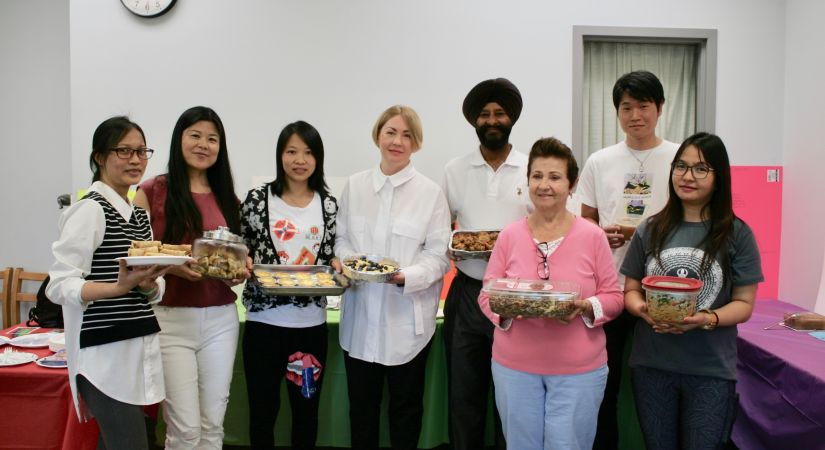
'Using food as a topic introduces, reviews and solidifies a wide range of vocabulary and language components'
Internationally renowned chef and teacher James Beard once said: "Food is our common ground, a universal experience." OC Life caught up with Thomas Lampi, an English Language instructor to learn more about their food-driven approach to learning about culture.
What do you teach at Okanagan College?
I teach English language skill classes — reading, writing and discussion (listening and speaking).
How did the international lunches start?
Beginner-level ESL courses (ELLS 010-030) are generally very multicultural classes consisting of both international students and domestic immigrant students. While we are helping the students to develop speaking and listening skills and learn more about Canadian culture, we are also trying to get them to celebrate the differences of their own cultures. Food is one of the easiest subject matters, so it is a natural inclusion.
How does it work – do all students make it together, or at home? What’s involved in the planning and preparations?
It varies from session to session, and is dependent on the number of students and class dynamics. For the most part, it is very much a potluck-style lunch, but with a slight twist in that the students have to give a presentation on what they have brought. The students individually prepare dishes at home, though if their dishes require heating, we make use of one of the staff lunch rooms to do so. The lead up to this activity is a culmination of a number of different activities throughout the term.
What do we learn from food?
Using food as a topic introduces, reviews and solidifies a wide range of vocabulary and language components: numbers, measurements, food names, recipes, ingredients and substitutes, imperatives, time-order transitional words and phrases, simple present, past and continuous tenses, and so much more.
What types of dishes are served during the lunches?
A variety of traditional dishes from the students’ home countries are served during the lunches: appetizers, main dishes (sweet, savory, spicy), desserts, as well as drinks — coffees and teas. There is a discussion around allergies related to ingredients, so all ingredients are to be listed as part of a display board that is setup behind the dishes.
What kinds of conversations do the lunches start among students?
Most conversations are about the dishes themselves, often expressing surprise at the flavours they did not expect. There is often a breakdown of stereotypical ideas about cultural foods as the students talk about what they have tried.
What are some of your favourite memories from the lunches?
There is no single memory which stands out from the lunches, but the enjoyment of seeing the students completely interacting with one another, particularly those who tended to be on the shy side. As already mentioned, students expressing surprise at the taste or flavours of the dishes are part of favourite group of memories for me. For example, one student brought in borsht for his traditional dish. Most of the students were hesitant to try any, perhaps because of the colour from the beets, but it was one of the favourite dishes in the end, with everyone wanting the recipe.
What is English language instruction?
English language instruction includes programs that help students whose first language is not English. They provide the language skills for academic, vocational or personal needs. While the whole-language approach integrates listening, speaking, reading and writing, emphasis on a particular skill and actual content may vary according to the particular goals of the student.
What kinds of programs are there?
- English Language certificate
- Part-time English Language development
- English for Academic Purposes Certificate
- English for Special Purposes
Where do I find out more?
Contact the English Language Department to find out about programs and intakes.
